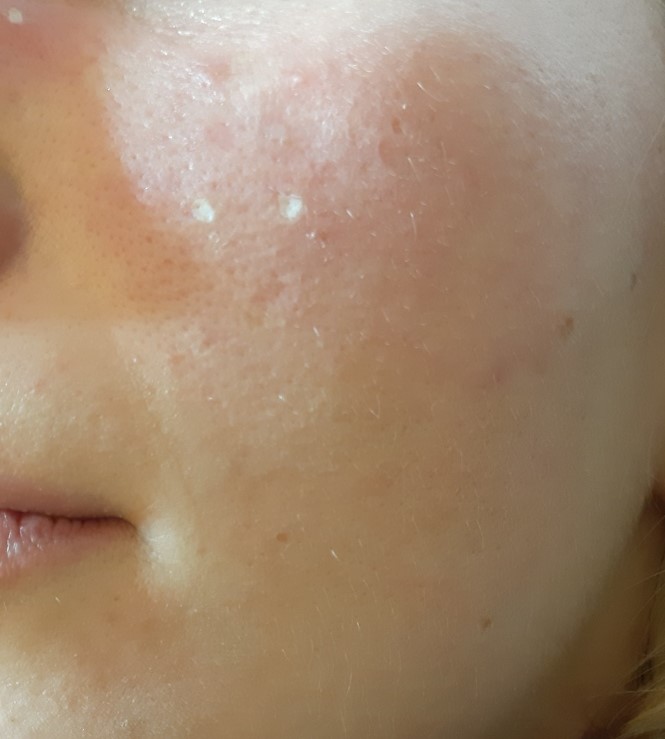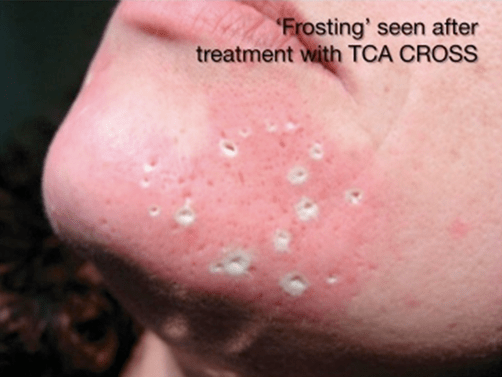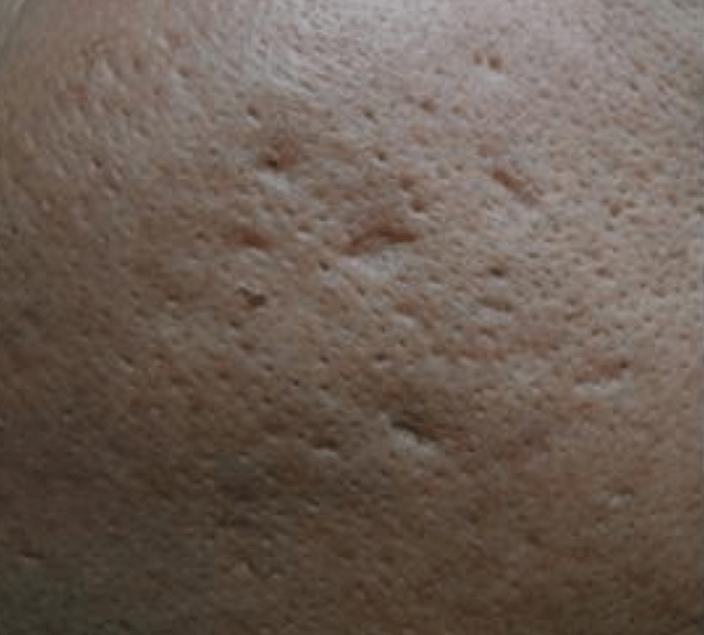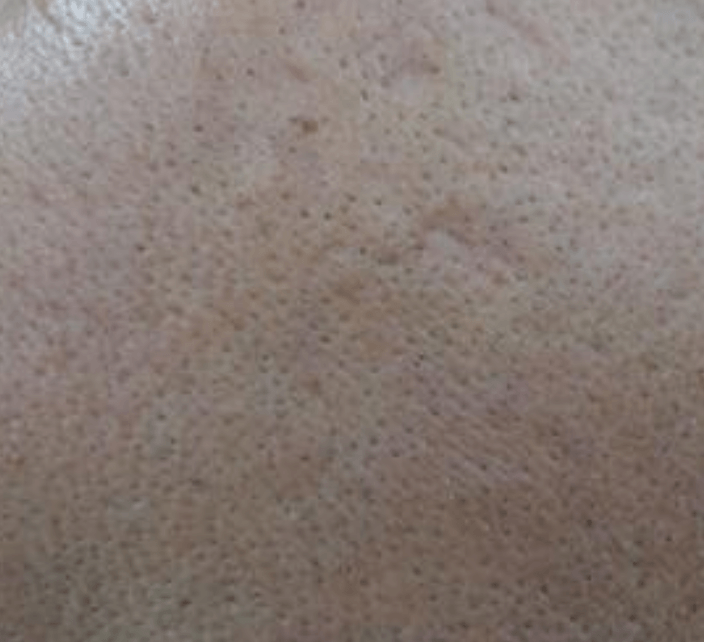TCA cross & Acne scarring

By Ulrik knap, md, laser & acne scar specialist
Treating acne scars is a medical art that requires great skills and the use of the right methods. Not one method fits all acne scar types. Hence, I treat acne scars with different methods and choose the best methods for each individual acne scar. Combining different methods – when relevant – is the only way to achieve the highest cure rate. Therefore, patients come from most of the world to visit my office and have their acne scars treated by me personally.
what is tca cross?
TCA cross stands for TriChloroacetic Acid Chemical reconstitution of Skin Scars and is a treatment that is suitable for treating deep atrophic scars in the skin caused by acne, rosacea or mechanical trauma such as piercing of the lips or nose.
As only a few other acne scar specialists such as my Australian colleague, Dr. Davin Lim, I use TCA cross for certain acne scar types including ice pick scars, shallow boxcar scars, and enlarged pores.
The best thing about TCA cross is that it gives permanent results in only a few treatments and is a very safe and effective treatment in the hands of a specialist.

How does TCA cross work?
With TCA cross you get a permanent result after only a few treatments. This is performed by locally applying a strong acid in the bottom of the acne scar. Typically, I use a TCA 50-100%.
Hence, local tissue damage occurs, which breaks down the scar tissue, denatures the collagen and stimulates the tissue to start remodeling. The remodeling process begins immediately after the treatment through stimulation of fibroblasts in the dermis, which creates new collagens and raises the scar.
When the deeper acne scars have been raised to a certain depth, you can choose to further even out the skin through fractional CO2 laser skin resurfacing.
How is TCA cross performed?
TCA cross is performed by applying a tiny droplet of TCA in the bottom of each scar. The delivery system can be as simple as a toothpick which has been dipped into a jar of TCA, where after the toothpick is placed into the scar. This is a safe and effective method.
It’s important before the procedure that any makeup is removed – preferably the evening before the treatment – because the combination of makeup and TCA can cause an inflammatory reaction which prolongs the healing.Each scar is treated individually with TCA.
Immediately after the application of the strong acid, the skin becomes white. This reaction is called frosting and is caused by denaturation of the proteins in the skin.
This only lasts 10-20 minutes. Thereafter the skin becomes red because of the remodeling of the scar tissue. The redness can persist for several weeks.
Several acne scars can be treated in the same session, and the treatment is repeated after 4 to 6 weeks.
The treatment typically takes between 5-15 minutes depending on the number of scars I’m treating.
After the treatment, you can use a lotion to keep the skin moist and recovery makeup (e.g. Lycogel) until the skin looks normal again.

What to look out for after TCA cross?
After the treatment, the skin typically appears red and a scab might form. It’s important not to pick off the scab to avoid wound infection.
When the scab falls off after some days, the acne scar can appear larger in the first few weeks after the treatment because of the local tissue damage to the skin. This is completely normal and will always improve as the remodeling progress.
In about 4 weeks, you’ll notice the result after treatment. Thereafter TCA cross should be repeated to get the result you want.
What is the downtime after TCA cross?
The downtime is the time it takes your skin to heal after treatment. The typical downtime after TCA cross is 3-6 days. Most patients heal very quickly and recovery after TCA cross is not a problem.
To cover any redness after the treatment, a special recovery makeup, called Lycogel, can be applied. This product matches all skin types.

Which kind of acne scars can be treated with TCA cross?
TCA cross is an ideal treatment for deeper scars such as:
- Ice pick scars
- Boxcar scars
- Piercing scars
- Linear scars
- Enlarged pores, e.g. on the nose, cheeks and upper lips
The treatment can be performed in all skin types, including Caucasian skin, Asian skin, and darker skin types.

How does the skin look like after TCA cross?
Immediately after TCA cross the scars appear white. This is called frosting. The skin around the scar can appear a bit red and irritated.
One or two days after the treatment, most patients form a scab that can be covered with recovery makeup such as Lycogel or any similar product.
The scab typically peels off after another 4-8 days. When the scab falls off, the scar might look a bit larger for the first few weeks after the treatment. That is completely normal, and you should not get scared! Thereafter, the scars will slowly improve as the tissue continues to remodel and form new collagen.

It usually only takes 5-15 minutes to perform TCA cross depending on the number of scars to treat. I can do multiple scars per minute.
How long does it take to perform?
How effective is the treatment?
You should expect that each individual scar is improved by 20-30% after each treatment. Hence, after 3 treatments an improvement of 60-80 % can be expected when treating deep ice pick scars, boxcar scars or larger pores. The usual result is a more even and smooth skin, and the cosmetic result is satisfying in all larger scientific papers.
However, it’s important for you to understand that it takes some weeks for the scars to remodel and for any notable results to appear.
You should also know that I cannot remove the acne scars or piercing scars completely. But what I can do in approximately 99.8% of cases is to make a remarkable improvement of the scars. This improvement continues to progress even months after the treatments due to the continuous remodeling of the scar tissue.



How do I take care of the skin after my treatment?
Cleanse the skin with water and a mild soap each morning and evening and use a chlorhexidine cream 3 times daily until the scab has peeled off. If no scab has formed, simply make sure to cleanse the skin with water and mild soap twice daily. However, always follow my instructions after your treatment.

Can TCA cross be combined with other treatments?
Yes definitely! In most cases, TCA cross is combined with other treatments such as subcision followed by dermal fillers, minor surgery, fractional CO2 laser skin resurfacing, etc. My chose of techniques all depends on your acne scar types.
In most patients, there is not just one kind of scar type but multiple, including larger pores, ice pick scars, boxcar scars, tethered scars, anchored scars, and rolling scars. Therefore, I always start by analyzing your acne scars to evaluate which kind of acne scar types you have. This is the first step towards a successful result.
Is TCA cross painful?
No, but a bit of discomfort can occur like small ant bites, which are very tolerable. This disappears less than a minute after the treatment is over.
All patients tolerate the treatment very well without the need for numbing cream.
Are there any side effects of the treatment?
The risk of complications to the treatment is absolutely minimal when TCA cross is performed in skilled hands.
Though the risk is very small, there’s a risk of wound infection. To reduce this risk, please avoid removing the scab yourself. In the first few days, the scab covers the wound and works as a protecting shield to the exterior environment. Thereafter, it will fall off all by itself in a matter of days.
The skin should be kept clean by applying water and mild soap twice daily and chlorhexidine cream 3 times daily.
In darker skin types, temporary darkening of the skin (PIH) should be expected. This might also occur in Caucasian patients, though the risk is much lower. I therefore always recommend sun avoidance and use of a high factor sun blocker (SPF 50+) twice daily from day 7 until 3 months after the treatment.
Please note, that redness of the skin locally in the treated scar is not a side effect but is predictable and will occur in everyone. This takes 4-8 weeks to subside.
On very, very rare occasions, the scars might get worse after TCA cross. This can occur in patients who tend to form keloids or if a wound infection occurs during wound healing. Therefore, it’s super important that you contact your doctor in case of signs of infection (increased redness, swelling, and pain in or around the wound) to get relevant antibiotic treatment.
Can TCA cross be performed in ethnic skin types?
Yes, TCA cross can be performed in all ethnic skin types. Meanwhile, post-inflammatory hyperpigmentation should be expected in darker skin types. This is a temporary darkening locally in the treated scar that will last for a few months.
To improve the skin healing process and lower the risk of PIH, I always recommend my patients to:
- Use a fading cream starting on day 7 after the treatment.
- Use a high factor (SPF 50) sun blocker two times a day starting at day 7 before the treatment and again at day 7 after the treatment for 3 months
- Sun avoidance in the months after the treatment.
Remember that you’re always allowed to use a recovery makeup (e.g. Lycogel) or similar products to cover any PIH as long as the darkening persists.
In most cases, you should expect at least two treatments, and most patients need 2-4 treatments with 4 weeks’ interval. The number of treatments is individual and depends on how good you heal, your acne scar type, how deep they are as well as your skin color. In darker skin types, an additional 1-2 treatments with TCA cross should be expected, since the TCA concentration I use is weaker to reduce the risk of PIH (post-inflammatory hyperpigmentation).
When the acne scars have raised to a certain depth, laser skin resurfacing can be performed to achieve further improvement of skin tone and texture.
How many treatments are required to treat my acne scars?
Dr. Ulrik Knap about TCA cross and acne scarring
As a laser and acne scar specialist, I use TCA cross as the first choice for treating certain types of acne scars.
The procedure is ideal for deep atrophic acne scars including ice pick scars, deep boxcar scars, linear scars, and large pores. In some patients, I only need to do TCA cross to achieve the result I want, while in other patients I perform TCA cross to raise the scars to a certain depth before moving on to other procedures such as fractional laser resurfacing.
TCA cross can be combined with other techniques depending on which scar types the patient has, such as minor surgery for very deep ice pick scars or narrow boxcar scar, and subcision followed by dermal fillers for tethered atrophic scars.
Just as my Australian colleague, Dr. Davin Lim, I personally really appreciate TCA cross because it’s such an ideal treatment for the deep atrophic acne scars and gives good results to the satisfaction of my patients.
However, please remember, even though TCA cross might sound like a simple procedure, it requires great skills and years of practice to manage and plan the treatment correctly. The first step in all acne scar treatment is always to analyze the types of acne scars and find the correct method for the right acne scar types. This will give the highest cure rate for acne scars.
Best Regards

Ulrik Knap, MD., Laser & Acne scar specialist

